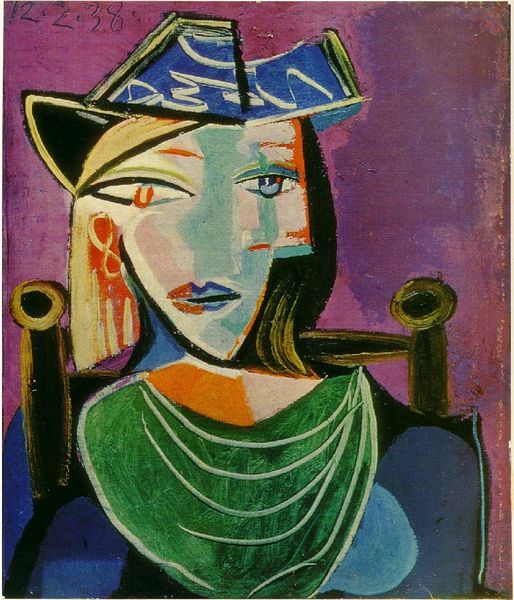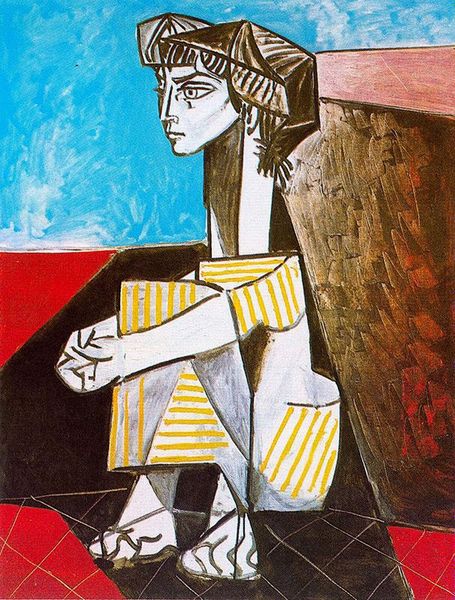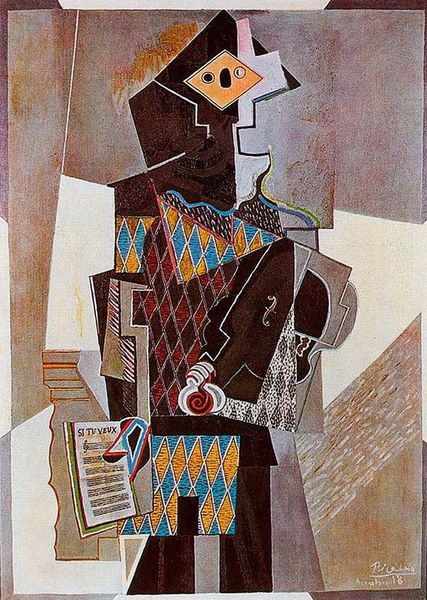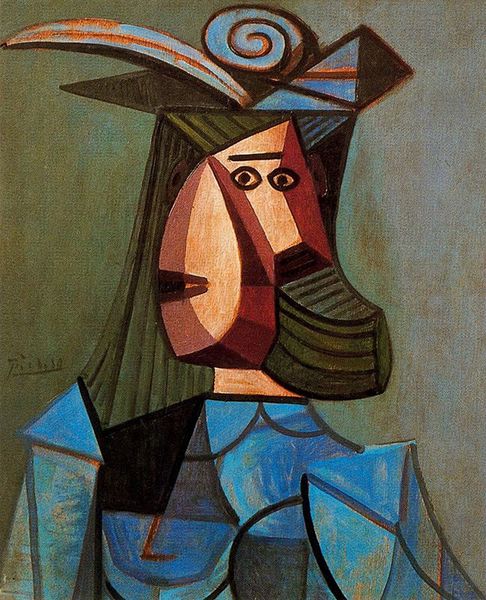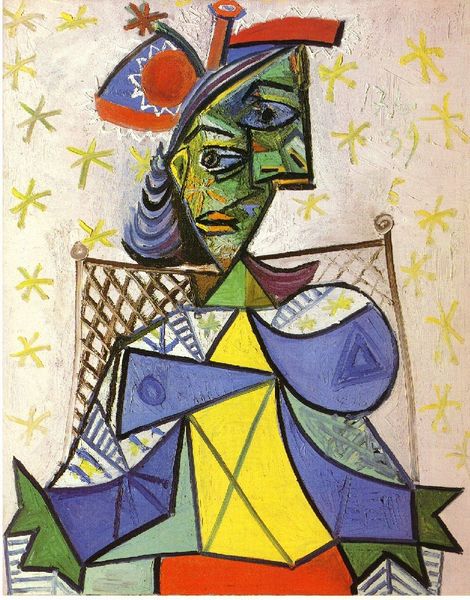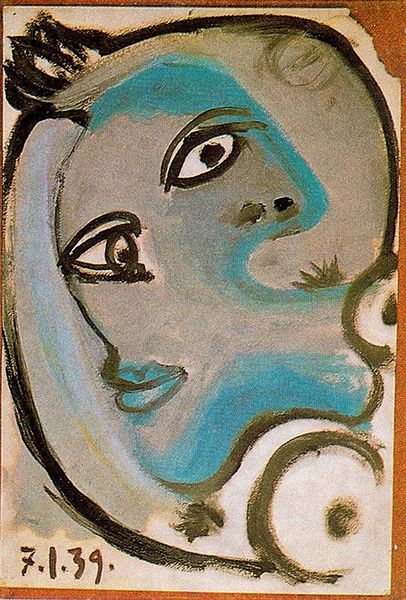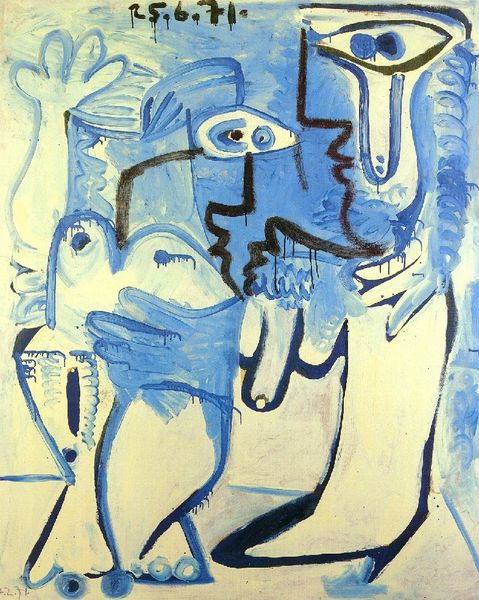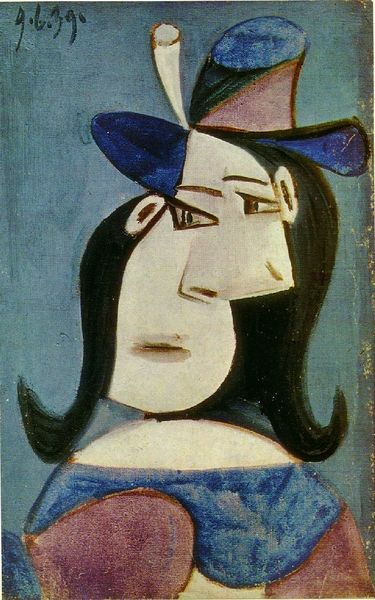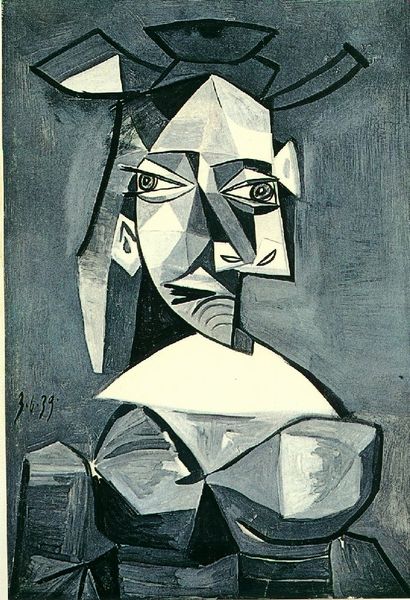
painting
#
portrait
#
cubism
#
painting
#
figuration
#
abstraction
Copyright: Pablo Picasso,Fair Use
Editor: Here we have Picasso’s 1954 "Portrait of Sylvette David in a Green Chair." It's a striking, angular work, very much in the Cubist tradition. The blues and greens give it a cool, almost detached mood. How would you interpret this painting in light of Picasso's other portraits, especially concerning its public reception? Curator: This painting emerged during a period when Picasso's art was increasingly under scrutiny for its political undertones, despite his assertions of art for art's sake. Looking at "Sylvette David," one can argue Picasso's shift toward figuration isn't merely stylistic, but a calculated engagement with public expectations after the Second World War. Museums, particularly in Europe and America, heavily promoted art that seemed apolitical to reconstruct an idea of cultural stability. This piece fits, but does it really? What is striking about the sitter's frontal pose against her profiled features? Editor: I see what you mean. It feels deliberately disjointed, unsettling almost. Like he's challenging that idea of stability through fractured representation. The color palette seems deceptively tranquil but doesn't settle in my eyes... almost as though her mind were disconnected from her actions, right? Curator: Exactly! And notice how Sylvette's youth and perceived innocence, highlighted by that high ponytail, played into the idealized image of femininity prevalent in postwar media. How does his cubist fragmentation disrupt or reinforce this societal construct? Museums at the time were keen on presenting accessible art. This painting, while seemingly representational, subtly disrupts that ease of access, doesn't it? Editor: It does, now that I consider it! So it's like Picasso is engaging in a quiet act of rebellion, almost subverting the expectations of both the public and the institutions showing his work. I hadn’t considered the painting's situation in the art world like that! Curator: Precisely. By examining the painting’s moment of cultural production and how galleries would publicly interpret its place, the social context becomes intrinsic to the meaning. Thank you. Editor: Thank you, this was fascinating!
Comments
No comments
Be the first to comment and join the conversation on the ultimate creative platform.


